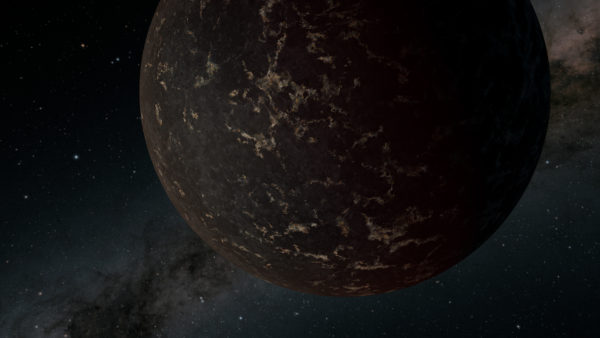A groundbreaking study, using data from NASA and a technique pioneered by a Vanderbilt professor, is giving humankind a glimpse at a distant exoplanet with a size similar to Earth and a surface which may resemble Mercury or Earth’s Moon.
Located nearly 49 light-years from Earth, the planet known as LHS 3844b was first discovered in 2018 by NASA’s Transiting Exoplanet Satellite Survey (TESS) mission. In its current form, the planet has little to no atmosphere and could be covered in the same cooled volcanic material, known as mare, that composes the dark lunar regions of the Earth’s Moon.
Just as our Earth orbits the Sun, LHS 3844b also orbits a star – in this case, a small, cool type of star called an M dwarf – making one full revolution around it in just 11 hours. The study describes the first time data from NASA’s Spitzer Space Telescope has been able to provide information about the atmosphere of a terrestrial world around an M dwarf.
The findings, published this week in the journal Nature by a team of researchers from Harvard, MIT and more, are illustrative of the broader scientific mission to understand the factors that could preserve or destroy atmospheres in planets with Earth-like characteristics, as scientists embark on research for habitable environments beyond our solar system.
-

Illustration of exoplanet LHS 3844b (NASA/JPL-Caltech/R. Hurt (IPAC))
Keivan Stassun, Stevenson Professor of Physics and Astronomy at Vanderbilt, is a co-investigator for the TESS mission. His team at Vanderbilt supplied the star map that guides the decisions of which stars the TESS satellite will most closely monitor for the existence of planets. He co-authored this new study and measured the physical properties of the M dwarf star – most importantly its diameter – so that the research team could then, in turn, understand the size and composition of the planet.
The study reports that LHS 3844b has a radius 1.3 times that of Earth, which Stassun measured by using pseudo-interferometry, a technique he pioneered. His technique measures the total intensity of starlight reaching Earth and combines it with the distance to the star – a process that resembles the sophisticated process of interferometry, which measures the interference of light, radio or sound waves.
“In our quest to place our own solar system and planetary home in context, we have to understand the broad diversity of other Earth-like worlds out there,” noted Stassun. “Here we have an exciting, and perhaps humbling, example of a possibly once Earth-like planet that has been laid waste, uninhabitable, because it has been left with no air — no anything for that matter — to breathe.”